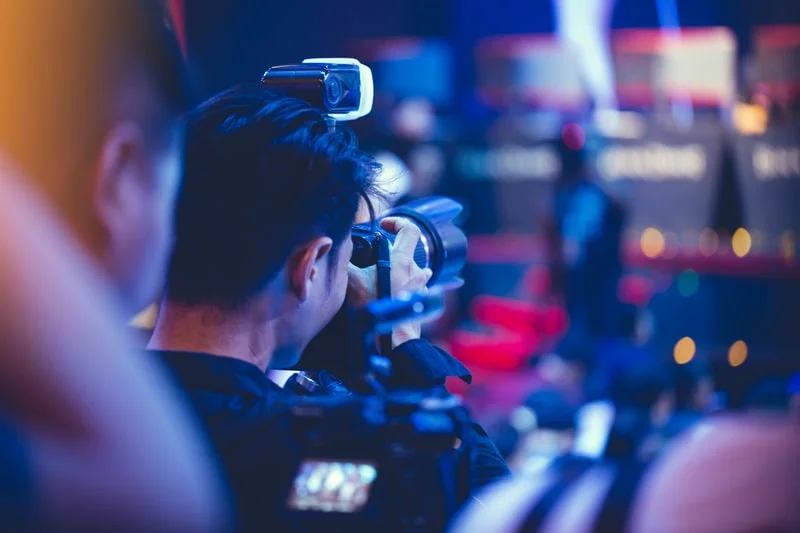
Event photography is a dynamic and rewarding genre that captures the essence of celebrations, corporate gatherings, conferences, weddings, and more. However, success in event photography doesn't happen by chance; it requires meticulous preparation, technical expertise, and an understanding of the event's unique requirements. Proper preparation ensures you’re ready to seize every moment, minimize surprises, and deliver stunning images that clients will cherish.
In this guide, we’ll walk you through comprehensive steps to prepare for successful event photography and videography—from pre-event planning and equipment considerations to on-the-day strategies and post-event follow-up.
1. Understand the Event Details
a. Clarify the Event Type and Purpose
Before anything else, understand what kind of event you'll be covering:
- Is it a wedding, corporate event, festival, conference, or social gathering?
- What is the event's purpose? Celebratory, promotional, informational?
Knowing this helps tailor your approach, equipment choices, and shooting style.
b. Know the Schedule and Timeline
Request a detailed schedule or agenda:
- When does the event start and end?
- Are there specific moments or key segments (speeches, performances, awards)?
- Are there breaks, networking sessions, or activities that require coverage?
Having a timeline allows you to plan your shots and allocate time effectively.
c. Identify Key Participants and Moments
Find out:
- Who are the VIPs, speakers, or performers?
- Are there scheduled poses or group shots?
- What moments are most important to the client?
Coordinate in advance to ensure these are prioritized.
2. Communicate with Clients and Event Organizers
a. Establish Expectations
Clarify:
- The style of photography preferred (candid, formal, artistic).
- Number and types of images expected.
- Delivery format, resolution, and turnaround time.
- Permissions and restrictions (e.g., no flash, specific areas off-limits).
b. Confirm Logistics and Access
- Obtain access points, parking info, and venue layout.
- Secure necessary passes, badges, or credentials.
- Discuss restrictions on flash or tripod use.
c. Build a Shot List
Work with clients to create a shot list:
- Key moments and people.
- Specific groupings or poses.
- Details or candid shots desired.
A comprehensive shot list ensures clarity and helps prioritize shots.
3. Prepare Your Equipment
a. Camera Gear
- Camera Bodies: Bring at least two bodies (backup is essential).
- Lenses: Versatile lenses such as 24-70mm f/2.8 for general shots, 70-200mm for candid or distant shots, and wide-angle lenses for group shots or venue shots.
- Memory Cards: Multiple high-capacity, fast cards—consider having 2-3 per camera.
- Batteries: Fully charged spare batteries and battery grip if available.
- Flash and Lighting: External flash, diffusers, or continuous lights if needed.
b. Additional Equipment
- Tripod or Monopod: Useful for stability, especially in low light.
- Light Modifiers: Diffusers, reflectors, or softboxes.
- Lens Cleaning Kit: To keep your lenses spotless.
- Event-specific accessories: Wireless triggers, remote shutter releases.
c. Prepare and Test Equipment
- Clean all lenses and sensors.
- Test camera functions and settings.
- Pack everything in a dedicated, organized camera bag.
4. Scout the Venue
a. Visit the Location in Advance
If possible, visit the venue beforehand:
- Identify good shooting spots.
- Note lighting conditions (natural and artificial).
- Check for power outlets if you need to charge gear on-site.
- Assess background clutter or distractions.
b. Plan Your Positioning
- Determine where you'll stand during key moments.
- Identify locations for portraits or staged shots.
- Consider lighting angles and background aesthetics.
5. Prepare for Lighting Challenges
a. Understand Venue Lighting
- Indoor venues often have low or mixed lighting.
- Use fast lenses (f/1.4 - f/2.8) to handle low light.
- Be ready to use high ISO settings, balancing noise and exposure.
b. Carry Light Modifiers
- Diffusers for harsh lights.
- Reflectors to bounce light onto subjects.
- External flashes with diffusers for fill light.
6. Develop a Shooting Plan
a. Prioritize Key Shots
- Establish a timeline for capturing essential moments.
- Be flexible to adapt as the event photography unfolds.
b. Capture a Mix of Candid and Formal Shots
- Candid images convey genuine emotion.
- Formal shots and group portraits provide structure.
c. Be Prepared for Spontaneity
- Anticipate unexpected moments.
- Keep your camera ready at all times.
7. On the Day of the Event
a. Arrive Early
- Arrive at least 30-60 minutes before the event start.
- Set up your equipment, test shots, and lighting.
b. Coordinate with Event Staff
- Confirm your designated shooting areas.
- Clarify when and where you can move freely.
c. Be Discreet and Respectful
- Blend into the environment.
- Avoid obstructing views or interrupting proceedings.
d. Stay Organized
- Keep track of shot lists and key moments.
- Use a checklist or notes app for reminders.
8. Post-Event Workflow
a. Download and Backup
- Transfer images promptly.
- Create multiple backups in different locations.
b. Select and Edit
- Review images for quality and relevance.
- Edit for exposure, color, and composition.
- Retouch as needed, maintaining authenticity.
c. Deliver Professionally
- Provide images in agreed formats.
- Meet deadlines to satisfy client expectations.
d. Gather Feedback
- Ask clients for feedback.
- Use insights for continuous improvement.
9. Continuous Learning and Improvement
- Study other event photographers’ work.
- Experiment with new techniques and equipment.
- Attend workshops, webinars, or industry events.
- Build a portfolio to showcase your style.
Conclusion
Preparing for successful event photography and videography is a multifaceted process that combines technical readiness, strategic planning, and excellent communication. By thoroughly understanding the event, coordinating with clients, preparing your gear, scouting the venue, and maintaining flexibility on the day, you'll set yourself up for success. Remember, the key to memorable event photography lies not only in technical skill but also in your ability to anticipate moments, adapt to changing circumstances, and deliver images that capture the spirit of each event.
Let's Connected
Name: Event Photographer Singapore
Address: 7 Temasek Boulevard Suntec Tower One #12-07, Singapore 038987
Phone: +6587333678
Map: https://maps.app.goo.gl/q8fqNhxvhVCiKAAQ6